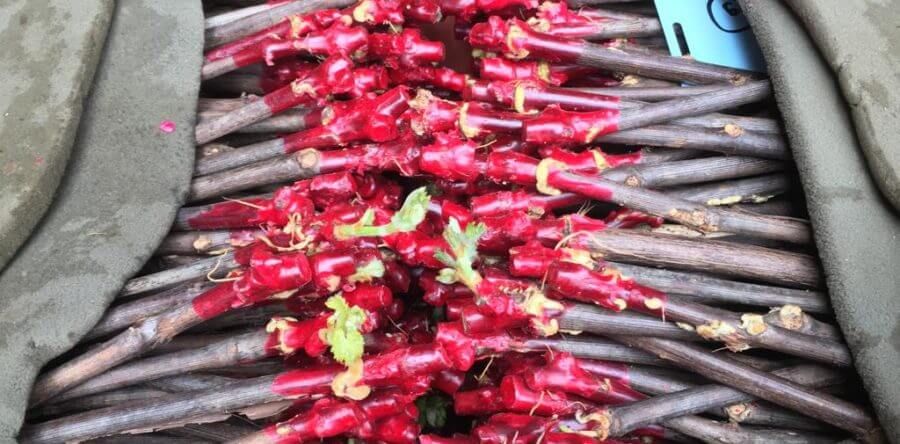Grafting is a key step in vine plant production. It is a delicate and decisive operation for the viability, longevity, and future performance of the vines.
At the heart of this process lies the union, the successful junction between scion and rootstock, which plays a fundamental role.
A high-quality union ensures an optimal flow of sap, greater resistance to diseases, and improved resilience to climatic challenges.
Grafting: A Precise and Technical Assembly
Grafting consists of joining two pieces of wood: the scion (the aerial part, selected for its agronomic and oenological qualities) and the rootstock (the root part, adapted to the soil and environment). This operation is generally carried out in the nursery between February and April. There are several types of grafts:
-
Omega grafting (Ω graft): used in about 95% of cases, it is mechanized and allows for high throughput (600 to 700 grafts/hour). Its automation facilitates large-scale production, but it is also the method most prone to callus formation, which can affect the quality of the union.
-
English cleft grafting: rarer (about 5% of cases), it is performed manually. Although more costly and less productive, this method allows for better alignment of tissues thanks to an oblique cut. It requires an identical diameter between the scion and the rootstock.
-
New techniques: some innovative methods, such as the F2 graft developed by the nursery Hebinger, or T-budding and chip-budding in the vineyard, are under development (see our article on top-grafting).

Different Types of Grafting
Wax: A Temporary Shield
After assembly, the grafting point is dipped in a protective wax. This serves several purposes:
-
To strengthen the plant during the first months of growth.
-
To prevent the grafting area from drying out, which is essential for callus formation.
-
To promote callus formation thanks to certain hormone-enriched waxes.

Stratification: The Crucial Stage of Callus Formation
Once protected, the grafted plants are placed in a hot chamber (28 °C) for 8 to 15 days, under controlled humidity. It is during this phase that callus formation occurs, meaning the development of new tissues connecting the vessels of the scion to those of the rootstock.
A successful graft, where the diameters are similar and the cuts well aligned, achieves an effective union in more than 80% of cases. The reconstituted cambium generates conductive vessels (xylem and phloem), ensuring the upward and downward flow of sap throughout the plant’s life.

Sorting: Ensuring Well-Joined Vines
After their growth in the nursery, the plants undergo a qualitative sorting process. The so-called “thumb test” is used to check the strength of the union by applying pressure on the scion. Plants with weak unions are discarded, ensuring a rigorous selection.
Note: Potted vines, marketed the same year as grafting, do not benefit from this in-depth sorting, which may affect their long-term quality.
Why is the quality of the union so critical?
The grafting point is a sensitive area, a true bottleneck for sap circulation. Poor callus formation or weak vessel continuity directly affects:
-
Vine vigor.
-
Consistency of production.
-
Resistance to water and heat stress.
-
Susceptibility to wood diseases, such as certain forms of Esca.
-
The risk of tylosis or poor graft/rootstock compatibility.
Conclusion: Anticipating and Investing in Quality
A successful graft is much more than a mechanical assembly: it is the guarantee of longevity and performance for the vineyard. In addition to selecting plant material adapted to their terroir and cultural practices, winegrowers must build a close relationship with their nurseryman. This collaboration requires strong anticipation: vine orders must be placed more than a year before planting.
A well-grafted vine can live as long as a human being. Investing in a successful union means offering the vineyard a stronger, more resilient, and more sustainable future.
